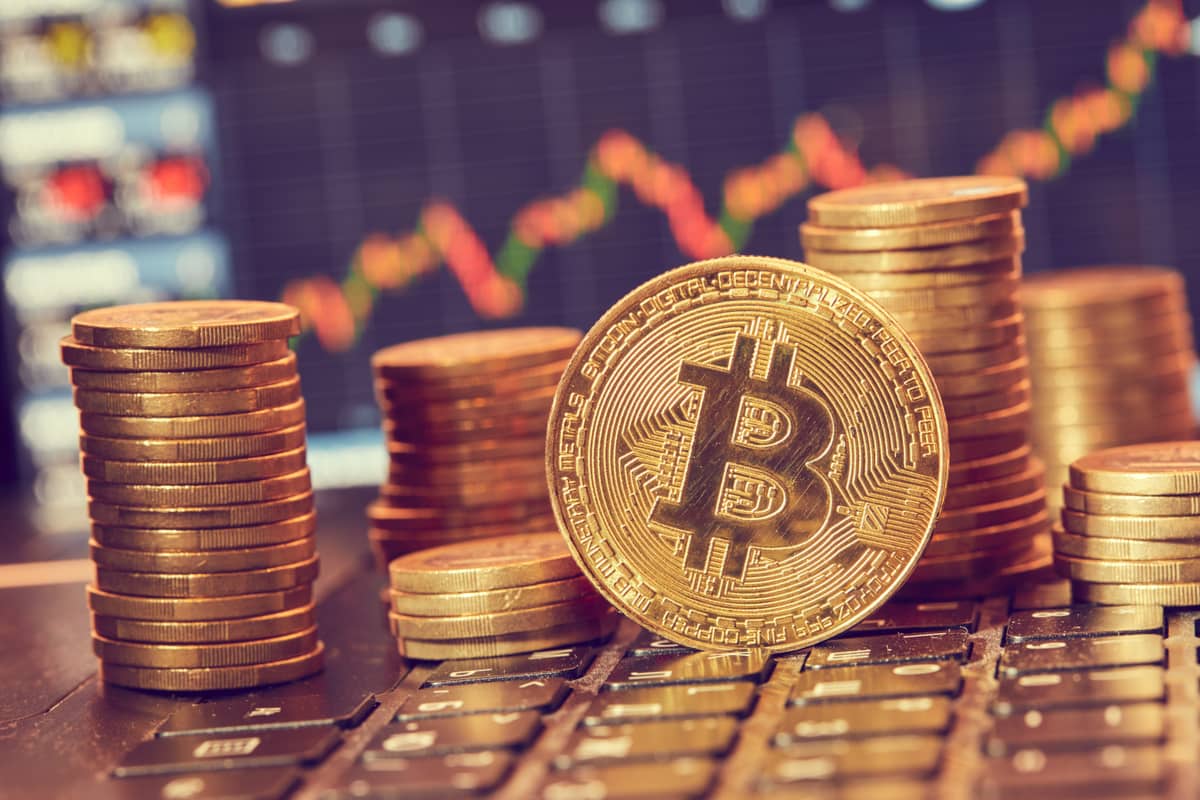- 1 Ripple’s Issuance Cap and Current Situation
- 2 Ripple’s Supply Reduction Mechanism
- 3 What is a lockup? Its purpose and impact
- 4 Relationship Between Ripple’s Price and Circulating Supply
- 5 The Future Potential of Ripple and Outlook on Issuance Volume
- 6 Ripple’s Challenges and Risks
- 7 Summary: Ripple’s Issuance Quantity and Future Outlook
- 8 Reference sites
Ripple’s Issuance Cap and Current Situation
Ripple (XRP) has been capped at 100 billion units since its design phase. This means it operates under a more centralized governance structure, unlike other cryptocurrencies such as Bitcoin.
The reason for setting an issuance cap is to curb inflation and preserve scarcity, thereby stabilizing XRP’s value.
Currently, most of the 100 billion units have already been issued, but not all are circulating in the market. Ripple Inc. holds the majority of XRP, and it releases them into the market strategically to stabilize prices.
This strategic management plays a crucial role in dampening XRP’s price volatility and aiming for long-term growth. However, its centralized nature has drawn criticism from cryptocurrency communities that prioritize decentralization.
Ripple’s Supply Reduction Mechanism
Ripple has a unique mechanism in which XRP is consumed as a transaction fee, gradually reducing the total issued amount.
Transactions on the Ripple network require a very small amount of XRP as a fee. This fee is not paid to the nodes that validate the transaction, but is burned, permanently removing it from circulation.
This mechanism is expected to increase XRP’s scarcity and raise its price over the long term.
However, because the amount of XRP consumed as a transaction fee is very small, a dramatic reduction is not expected. The goal is to gradually reduce supply to curb inflation and maintain XRP’s value. This reduction mechanism can be considered one of the key elements supporting XRP’s long-term value.
What is a lockup? Its purpose and impact
Many of Ripple’s issued XRP are locked up by Ripple Inc. A lockup means storing XRP so that it does not circulate in the market for a specific period.
Purpose of the lockup
The main purpose of Ripple Inc. locking up XRP is to adjust the supply to the market and stabilize the price. If a large amount of XRP is released into the market at once, the price could plummet.
By locking up, XRP can be supplied to the market in a planned manner, suppressing price fluctuations and gaining investor confidence.
Additionally, locked-up XRP is also used as funds for Ripple Inc.’s business operations and for promoting XRP.
The timing of lockup release and the amount released are generally announced in advance.
Impact of the lockup
However, the existence of locked-up XRP makes it difficult to gauge market supply and has been pointed out as a potential factor in price volatility.
Relationship Between Ripple’s Price and Circulating Supply
Relationship Between Circulating Supply and Scarcity
Generally, cryptocurrencies with lower circulating supply tend to be scarcer and more likely to see price increases. This is based on the basic market principle that limited supply relative to demand raises scarcity value and drives prices up.
In the case of Ripple, the maximum issuance is set at 100 billion units, which is relatively high compared to other cryptocurrencies. However, most of them are managed by Ripple Labs, and only a portion is actually circulating in the market.
Therefore, Ripple’s price is heavily influenced not only by its circulating supply but also by the amount supplied to the market and demand trends. Additionally, Ripple Labs’ policies and the adoption of RippleNet are important factors that affect the price.
Thus, when predicting Ripple’s price, it’s necessary to consider various factors beyond just the circulating supply.
Market Demand and Supply
Ripple’s price fluctuates based on the balance of market demand and supply, just like other financial instruments. If the circulating supply is fixed, increased demand for Ripple will drive the price up, while lower demand will cause it to fall.
For example, if RippleNet adoption increases and XRP usage grows, demand for XRP may rise, potentially boosting its price. Conversely, negative news about Ripple Labs or the emergence of competing international remittance services could reduce demand for XRP, leading to a price decline.
Moreover, the overall cryptocurrency market trend also impacts Ripple’s price. When major cryptocurrencies like Bitcoin rise, Ripple tends to move upward in tandem.
To understand market demand and supply, it’s important to constantly monitor the latest news about Ripple and market trends.
Hints for Future Price Forecasting
Predicting Ripple’s price is very difficult, but circulating supply is one of the key factors that influence price. However, supply alone cannot predict price. Market trends, Ripple Labs’ strategy, regulatory conditions, and other factors must be considered.
As a hint for price forecasting, first review Ripple Labs’ roadmap to understand future business developments and plans for XRP adoption. Also, by checking RippleNet deployment and XRP usage, you can anticipate demand trends.
Additionally, you should factor in the overall cryptocurrency market trends and regulatory environment.
However, even with these considerations, accurate price prediction is not possible. Use this information as a reference and exercise caution when making investment decisions.
The Future Potential of Ripple and Outlook on Issuance Volume
Ripple’s Strategy and Future Issuance Plans
Ripple is launching various strategies to promote XRP. One of them is the expansion of RippleNet. RippleNet is a network that enables fast and low-cost international remittances, and many financial institutions participate in it.
Ripple aims to increase XRP’s value by expanding the number of RippleNet participants and promoting XRP usage.
Additionally, Ripple is developing new projects to utilize XRP across various sectors. For example, by developing payment systems and supply chain management systems that leverage XRP, they aim to expand demand for XRP.
Regarding future issuance plans, Ripple has announced a schedule to periodically release XRP into the market. However, the amount and timing may change depending on market conditions and Ripple’s strategy.
Therefore, it is important to keep checking Ripple’s announcements and stay informed with the latest information.
Expansion of RippleNet and Usage of XRP
RippleNet is an innovative network that enables fast and low-cost international remittances. Traditional international remittance systems faced challenges because they involved many intermediaries, leading to time and cost.
By leveraging blockchain technology, RippleNet addresses these challenges and achieves more efficient international remittances.
Financial institutions participating in RippleNet can send international remittances in seconds using XRP. Fees are also very low, allowing significant cost savings compared to traditional systems.
As RippleNet expands, XRP usage is expected to increase, raising its value. In particular, emerging markets where traditional remittance systems are not widespread may see accelerated adoption of RippleNet.
The expansion of RippleNet can be considered a key factor that significantly influences XRP’s future potential.
Major Exchanges Handling Ripple
Ripple (XRP) is traded on various cryptocurrency exchanges worldwide.
In Japan, exchanges such as Coincheck and SBI VC Trade are known as major platforms. Coincheck features an interface that is easy for beginners, allowing XRP purchases with simple operations. SBI VC Trade, operated by the SBI Group, provides a sense of security with comprehensive security measures.
Internationally, exchanges like Binance and Kraken are known for high XRP trading volumes. These platforms also allow advanced trading such as leveraged positions.
When trading XRP, it is important to compare each exchange’s features, fees, and security to choose the one that suits you. Additionally, because storage and transfer methods for XRP may differ between exchanges, be sure to verify them in advance.

Ripple’s Challenges and Risks
Litigation with the SEC
Ripple is being sued by the U.S. Securities and Exchange Commission (SEC) for selling unregistered securities. The SEC considers XRP to be a security and claims that Ripple’s sale of XRP without registering it is illegal.
The outcome of this lawsuit could significantly impact Ripple’s price. If Ripple loses, XRP would be treated as a security, potentially leading to delisting from exchanges and stricter regulation. Conversely, if Ripple wins, XRP’s legal status would be clarified, possibly driving the price higher.
The lawsuit’s trajectory remains uncertain, drawing attention to future developments. Investors need to fully understand the risks before considering investing in XRP.
Price Volatility Risk
Cryptocurrencies are generally known for sharp price swings. Ripple is no exception, having experienced significant price changes within hours in the past.
Factors contributing to price volatility include market supply-demand dynamics, regulatory conditions, and news related to Ripple.
To mitigate price volatility risk, diversification and setting stop-loss levels can be effective. Leveraged trading may yield substantial profits but also carries the risk of significant losses. When engaging in leveraged trading, fully understand the risks and proceed cautiously.
Cryptocurrency investment is inherently high-risk, high-return, and investors should always keep this in mind.
Regulatory Uncertainty
Legal regulation of cryptocurrencies is still developing worldwide. Regulations vary by country, and future regulatory trends could affect Ripple’s price and usage.
For instance, if a country bans cryptocurrency trading, Ripple would become untradeable there, potentially causing its price to fall. Likewise, changes to cryptocurrency taxation could increase investors’ tax burdens and reduce demand for Ripple.
Regulatory uncertainty is one of the major risks in cryptocurrency investment. Investors should constantly monitor regulatory developments in each country and manage risks. Additionally, staying updated with the latest news and information about cryptocurrencies is essential.
Summary: Ripple’s Issuance Quantity and Future Outlook
Ripple’s issuance quantity is a major factor that influences its scarcity and price. By understanding the issuance cap, reduction mechanisms, and market trends, you can make wiser investment decisions.
Ripple has entered the massive international remittance market, and as RippleNet expands, the use of XRP is expected to grow. However, there are also various challenges and risks, such as litigation with the SEC, price volatility, and regulatory uncertainty.
When investing, you need to carefully consider these factors, manage risks, and make prudent decisions.
While hoping for Ripple’s future prospects, it is important to maintain a calm perspective and keep a close eye on market trends.
Investing in XRP should be done at your own risk.
Let’s look forward to Ripple’s future development and the appreciation of XRP’s value. It is essential to watch Ripple’s movements from a long‑term perspective.
Reference sites
グローバルな送金ソリューションとして注目されている「XRP」は、独自の特徴を持つ暗号資産(仮想通貨)です。本記事ではXR…
リップルは国際送金での利用に長けた仮想通貨(暗号資産)であり、さまざまな金融機関や企業と提携して、送金手段としての実用化…
XRP(エックスアールピー)の取引をしている方にとって、XRP(エックスアールピー)の将来性や価格が今後どうなっていくの…
暗号資産には発行枚数の上限が設けられているものがあり、発行された枚数は価格の変動に影響をおよぼす要因になります。…
暗号資産やブロックチェーンに関することなら 「ビットバンクプラス」日本最大級暗号資産取引所・販売所「ビットバンク」が運営…














